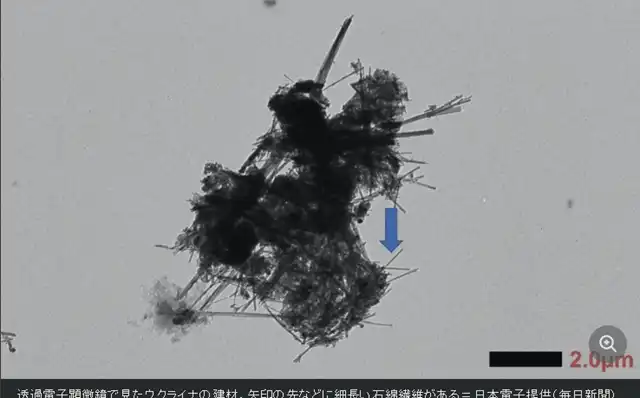Asbestos Detected in Buildings Damaged in Ukraine: Analyzed by Japanese Company
- Normal Liver Cells Found to Promote Cancer Metastasis to the Liver
- Nearly 80% Complete Remission: Breakthrough in ADC Anti-Tumor Treatment
- Vaccination Against Common Diseases May Prevent Dementia!
- New Alzheimer’s Disease (AD) Diagnosis and Staging Criteria
- Breakthrough in Alzheimer’s Disease: New Nasal Spray Halts Cognitive Decline by Targeting Toxic Protein
- Can the Tap Water at the Paris Olympics be Drunk Directly?
Asbestos Detected in Buildings Damaged in Ukraine: Analyzed by Japanese Company
- Should China be held legally responsible for the US’s $18 trillion COVID losses?
- CT Radiation Exposure Linked to Blood Cancer in Children and Adolescents
- FDA has mandated a top-level black box warning for all marketed CAR-T therapies
- Can people with high blood pressure eat peanuts?
- What is the difference between dopamine and dobutamine?
- How long can the patient live after heart stent surgery?
Asbestos Detected in Buildings Damaged in Ukraine: Analyzed by Japanese Company
The risk of asbestos, a carcinogenic substance, being present in the building materials of Ukrainian residences and other structures damaged by Russia’s attacks has been confirmed.
Scientific equipment manufacturer Nihon Denshi (located in Akishima City, Tokyo) imported and analyzed 10 samples of local building materials under special permission.
As a result, asbestos was detected in all samples. Experts are emphasizing the necessity of asbestos measures for the reconstruction of Ukraine, stating that “asbestos measures are essential for the reconstruction of Ukraine, including building repairs.”

Ukraine was once one of the world’s leading importers of asbestos. It is believed that asbestos, which is also produced in neighboring Russia and Kazakhstan, was often used as insulation material due to the cold climate. In September 2022, a law banning the use of asbestos was enacted. This was part of the preparations for joining the European Union (EU), with the ban on asbestos being a condition aimed at Russia’s invasion in February of the same year.
The investigation into asbestos in the destroyed buildings was initiated by Miyamoto International (MI), a U.S. disaster recovery consulting company that has been commissioned by the United Nations to carry out building repairs. They collected samples from 10 locations, including collective housing and schools in four locations such as the capital, Kyiv, and the eastern city of Kharkiv.
Nihon Denshi conducted the analysis of these samples free of charge. Since the import of products containing asbestos is prohibited in Japan, they submitted an “Import and Use Notification for Asbestos Analysis Samples” to the Labor Standards Inspection Office for international “research and testing” purposes and received permission for the samples to be delivered in November 2023.
Collaborating with external analytical institutions, they meticulously examined the samples using two types of electron microscopes until February of this year. As a result, chrysotile asbestos, which is widely used locally, was detected in all 10 samples. The proportion of asbestos in the samples was around 5% by weight, with the roof material of the collective housing in Kharkiv containing a concentration of 7-8%. In Japan, products with more than 0.1% asbestos are subject to manufacturing and use restrictions.
Ken Takahashi, an expert in asbestos damage and honorary professor at the University of Occupational and Environmental Health, Japan, stated that “the results of this analysis will serve as a basis for alerting workers and residents in the area to the dangers of asbestos and implementing precautionary measures. It is also necessary to make international organizations aware that asbestos measures will be needed when advancing reconstruction efforts.”
MI has implemented repairs for over 7,000 households, including collective housing, but they had anticipated asbestos contamination and created guidance (in Ukrainian) outlining precautions to be taken during debris disposal. President Hideki Miyamoto stated that “this has been very valuable information for planning the reconstruction of the damaged buildings. We hope that the guidance will help spread awareness.”
Asbestos Detected in Buildings Damaged in Ukraine: Analyzed by Japanese Company
(source:internet, reference only)
Disclaimer of medicaltrend.org
Important Note: The information provided is for informational purposes only and should not be considered as medical advice.



